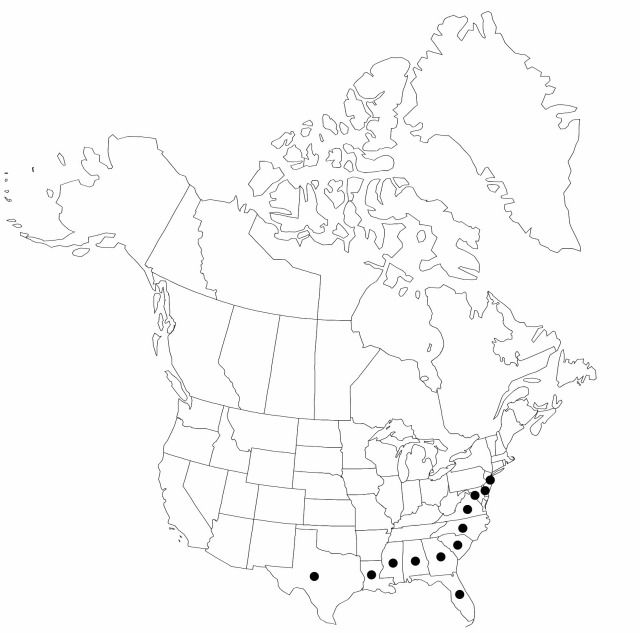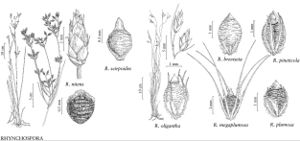Rhynchospora oligantha
Ann. Lyceum Nat. Hist. New York 3: 212. 1835.
Plants perennial, densely cespitose, knottybased, 20–40 cm; rhizomes absent. Culms filiform, leafy at base, wiry. Leaves ascending to erect; blades filiform, nearly terete, or channeled, sometimes compressed, nearly reaching distal inflorescence or much shorter, 0.2–0.3 mm thick, apex subulate. Inflorescences: spikelet clusters 2–6, simple or reduced to 1 spikelet, branches ascending to divaricate or reflexed; leafy bracts single per cluster, filiform, setaceous, with clusters appearing lateral to bracts. Spikelets pale redbrown, ellipsoidlanceoloid, 5–6(–8) mm, apex acute to acuminate; fertile scales oblongelliptic, convex, acuminate, 3.5–5 mm, apex broadly acute, midrib forming apiculus. Flowers: perianth bristles 6, reaching to or slightly past tubercle base, increasingly plumose from middle to base. Fruits 1–3 per spikelet, (2.5–)2.7–3(–3.4) mm; body light brown to brown, ellipsoidobovoid, distally conspicuously necked, tumidly lenticular, 1.7–2.5 × 1.5–1.8 mm; surfaces smooth or minutely transversely rugulose; tubercle conicsubulate, 0.5–0.7 mm, base flaring.
Phenology: Fruiting spring–summer.
Habitat: Sands and peats of bogs, depressions in savannas, open pinelands, seeps
Elevation: 0–200 m
Distribution

Ala., Del., D.C., Fla., Ga., La., Miss., N.J., N.C., S.C., Tex., Va., West Indies, Central America.
Discussion
Rhynchospora oligantha is distinguished from other taxa of its complex mostly by the distinctive neck at the achene apex, a feature essentially absent in R. breviseta, its closest relative. Those two species have been heavily impacted by conversion of pine savannas to cropland or pine plantations; even with abandonment or clearing of such land, they are very slow to reoccupy the disturbed sites.
Selected References
None.
